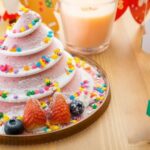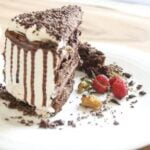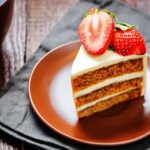Have you ever wondered how to decorate a cake with frosting at home? Cake decoration is not only about making the dessert look appealing, but it also allows for self-expression and creativity.
Whether it’s for a special occasion or just for fun, creating beautiful designs with frosting can bring joy and satisfaction. In this article, we will explore the art of cake decorating and provide tips and techniques for achieving professional-looking results from the comfort of your own kitchen.
The first step in learning how to decorate a cake with frosting at home is selecting the right type of frosting. There are various options to choose from, such as buttercream, cream cheese, and fondant, each offering different textures and flavors. Understanding the characteristics of each type of frosting will help you make an informed decision based on your preferences and the specific needs of your cake.
Once you have chosen the perfect frosting for your cake, it’s important to properly prepare the cake before applying the frosting. This includes leveling the cake layers and adding a crumb coat to create a smooth base for decorating. The right tools and techniques play an essential role in this process, which we will further explore in this article.
Selecting the Right Frosting
When it comes to decorating a cake with frosting at home, selecting the right type of frosting is crucial. There are several different types of frostings to choose from, each with its own unique flavor and texture. The most popular options include buttercream, cream cheese, and fondant. Understanding the differences between these options and knowing how to choose the best one for your cake can elevate your cake decorating game.
Buttercream Frosting
One of the most versatile and commonly used frostings for cake decoration is buttercream. It is smooth, creamy, and easy to work with, making it ideal for both frosting and piping designs onto a cake. Buttercream can be flavored in countless ways, allowing you to customize the taste to complement your cake flavor.
Cream Cheese Frosting
Cream cheese frosting offers a tangy flavor that pairs well with a variety of cakes, particularly red velvet or carrot cake. It has a softer consistency than buttercream and may not hold up as well for intricate designs, but it adds a delicious richness to your dessert.
Fondant
For a more professional-looking finish, consider using fondant. While not technically a frosting in the traditional sense, fondant is often used as an outer layer for cakes due to its smooth finish and ability to be molded into various shapes and textures. Fondant allows for intricate designs and decorations that may be difficult to achieve with other types of frosting.
Before choosing a frosting for your cake, consider the flavor profile you want to achieve, the design you have in mind, and any dietary restrictions or preferences of yourself or your guests. Each type of frosting has its own unique properties that make it suitable for different purposes. By understanding these differences, you can ensure that you select the best frosting for your specific cake decorating needs.
Preparing the Cake
Properly preparing your cake before frosting is essential for achieving a professional and polished look. In this section, we will discuss some valuable tips and tricks for preparing your cake, including leveling and crumb coating.
Leveling the Cake
Before you can start decorating your cake with frosting, it’s important to ensure that the surface of the cake is even and level. To do this, you can use a long serrated knife or a cake leveler to carefully trim off any domed or uneven parts of the cake. This step not only ensures a more stable base for decorating but also allows the frosting to be distributed more evenly.
Crumb Coating
After leveling your cake, it’s time to apply a crumb coat. A crumb coat is a thin layer of frosting that is applied to the entire surface of the cake to seal in any loose crumbs.
This step is crucial for achieving clean and smooth frosting on your final decoration. To crumb coat your cake, start by spreading a thin layer of frosting over the entire surface, then refrigerate the cake for about 15 minutes to allow the crumb coat to set before applying the final layer of frosting.
By taking the time to properly level and crumb coat your cake before decorating with frosting, you’ll achieve better results and a more professional-looking finish that will surely impress your family and friends. Now that you’ve prepared your cake, it’s time to move on to selecting your preferred type of frosting and getting ready to bring your vision to life.
Tools and Techniques
When it comes to cake decorating, having the right tools and knowing the basic techniques for frosting a cake are essential. Knowing how to decorate a cake with frosting at home can be a fun and rewarding experience, but it requires the proper equipment and knowledge of fundamental techniques.
Piping bags are one of the most important tools for cake decoration. They come in different sizes and materials, such as disposable plastic or reusable cloth. Piping tips also play a crucial role in creating various designs with frosting. Tips come in different shapes and sizes, allowing decorators to create anything from simple lines and dots to intricate flowers and borders.
Spatulas are another essential tool for frosting cakes. A straight spatula is perfect for spreading frosting on the top and sides of a cake, while an offset spatula is great for achieving smooth, even surfaces. Both types of spatulas are necessary for achieving professional-looking results when frosting a cake.
Finally, basic techniques such as crumb coating, applying an even layer of frosting, and creating smooth edges are essential skills to master when decorating a cake with frosting at home. These fundamental techniques provide the foundation for more advanced decoration methods and ensure that the finished product looks polished and visually appealing.
| Essential Tools | Description |
|---|---|
| Piping Bags | Used to pipe frosting onto cakes in various designs |
| Piping Tips | Comes in different shapes and sizes for creating different designs with frosting |
| Spatulas | Straight spatula for spreading frosting on top; offset spatula for achieving smooth surfaces |
| Frosting Techniques | Crumb coating; Applying an even layer of frosting; Creating smooth edges |
Color and Texture
Adding color and texture to your frosting can take your cake decorating skills to the next level. There are several ways to enhance the appearance and taste of your frosting, and in this section, we will explore some creative techniques for achieving beautiful and delicious results.
When it comes to adding color to your frosting, using food coloring is a popular choice. Gel food coloring is often preferred over liquid food coloring as it is more concentrated and won’t water down your frosting. To achieve pastel shades, simply add a small amount of gel food coloring and mix thoroughly. For more vibrant colors, gradually add more food coloring until you reach the desired shade.
Flavored extracts can also be used to customize the taste of your frosting while adding subtle hints of flavor. Whether you prefer vanilla, almond, lemon, or any other extract, simply add a small amount to your frosting and mix well. Keep in mind that a little goes a long way when it comes to flavored extracts, so start with a small amount and adjust as needed.
In addition to color and flavor enhancements, different piping techniques can also be used to add texture to your frosting. From simple swirls and rosettes to intricate patterns and designs, experimenting with various piping tips and techniques can create visually stunning cakes that are sure to impress. Whether you’re using a star tip for classic borders or a petal tip for elegant floral accents, mastering different piping techniques can elevate the overall look of your cake.
By incorporating these creative ideas for adding color and texture to your frosting, you can transform an ordinary cake into a work of art that reflects your personal style and creativity. Experiment with different colors, flavors, and piping techniques to discover unique combinations that will make your cakes stand out at any celebration.
Adding Decorative Elements
Decorating a cake with frosting is a delightful and creative way to add a personal touch to any celebration. Once you have mastered the basic techniques of frosting a cake, it’s time to take it to the next level by adding decorative elements. Here are some fun and easy ideas for adding decorative elements to your cake:
Sprinkles
Sprinkles are a classic and colorful way to add flair to your cake. Whether you prefer traditional rainbow sprinkles or specialty shapes and colors, sprinkles can easily transform a plain frosted cake into a festive masterpiece. You can sprinkle them uniformly over the entire cake or create patterns and designs for a more personalized touch.
Edible Flowers
Adding edible flowers to your cake is an elegant way to incorporate natural beauty and aroma into your dessert. Edible flowers such as violets, roses, lavender, and pansies not only enhance the visual appeal of the cake but also infuse a delicate floral flavor. When using edible flowers, make sure they are pesticide-free and suitable for consumption.
Chocolate Shavings
Create a deliciously indulgent cake by garnishing it with chocolate shavings. Using a vegetable peeler, you can create delicate curls of chocolate from a solid block or bar of chocolate. These shavings can be scattered over the top of the cake for an effortless yet sophisticated decoration.
These ideas are just the beginning when it comes to embellishing your frosted cakes with decorative elements. Get creative and experiment with various toppings, such as fresh fruit, nuts, candies, or even edible gold leaf for an extra touch of luxury. The possibilities are endless when it comes to expressing your unique style through cake decoration. Remember that HowTo.com has plenty of information on how to decorate your cakes with frosting at home.
Advanced Techniques
Creating beautiful and intricate designs on a cake can take your frosting skills to the next level. Here are some advanced techniques for decorating a cake with frosting at home:
- Creating Ombre Effects: Ombre is a popular cake decorating trend that involves blending different shades of color on the cake to create a gradient effect. To achieve this look, start by dividing your frosting into separate bowls and tinting each bowl with increasing amounts of food coloring to create different shades. Then, using an offset spatula or piping bags, carefully blend the colors together on the cake to achieve a smooth ombre effect.
- Piping Intricate Designs: Piping intricate designs with frosting requires practice and patience, but the results can be stunning. Invest in a variety of piping tips to create different shapes and patterns, such as flowers, rosettes, leaves, and lace designs. Practice piping these designs on parchment paper before attempting them on your cake to perfect your technique.
- Using Stencils: Stencils are a versatile tool for adding detailed designs to your cake with frosting. You can purchase pre-made stencils or create your own custom designs using stencil sheets. Simply hold the stencil in place on the cake and use a small offset spatula or icing scraper to spread thinned out frosting over the stencil. Carefully lift the stencil off the cake to reveal the intricate design.
Mastering these advanced techniques will take your cake decorating skills to new heights and impress your friends and family with professionally decorated cakes at home.
Remember that practice makes perfect when it comes to mastering these advanced techniques, so don’t be discouraged if you don’t get it right on your first try. Keep experimenting and honing your skills until you achieve the desired results. With time and dedication, you’ll become a pro at creating stunning cakes with beautifully decorated frosting at home.
Troubleshooting
When decorating a cake with frosting at home, there are several common issues that may arise during the process. One of the most frequent problems is air bubbles forming in the frosting, which can create an uneven and unattractive appearance on the cake.
To troubleshoot this issue, simply tap the frosted cake gently with a spatula or knife to release the air bubbles. Additionally, allowing the frosting to rest for a few minutes before applying it to the cake can help reduce the occurrence of air bubbles.
Another potential issue when decorating a cake with frosting is achieving smooth and clean lines on the finished product. If you find that your frosting is not spreading evenly or leaving streaks on the cake, try using an offset spatula instead of a regular spatula or knife. The angled blade of an offset spatula allows for better control and precision when spreading the frosting, resulting in a smoother finish.
Additionally, if you encounter difficulties with piping intricate designs or writing messages with frosting, it may be helpful to practice on parchment paper before attempting it directly on the cake. This will allow you to refine your technique and get comfortable with handling the piping bag and tip.
It’s also important to ensure that your frosting has reached the proper consistency for piping – it should be firm enough to hold its shape but not so stiff that it becomes difficult to pipe.
By being aware of these common issues and implementing these troubleshooting techniques, you can enhance your skills in decorating cakes with frosting at home. With practice and patience, you’ll be able to overcome any challenges that may arise and create beautifully decorated cakes that are sure to impress your friends and family.
Overall, troubleshooting issues when decorating a cake with frosting requires patience and practice. By being mindful of potential problems and knowing how to address them effectively, you can elevate your cake decorating skills and achieve professional-looking results right in your own kitchen.
Conclusion
In conclusion, learning how to decorate a cake with frosting at home can be a fun and rewarding experience for any baker. From selecting the right frosting to mastering basic techniques and exploring advanced decorating methods, there are endless possibilities for creating stunning designs on cakes. By following the tips and tricks provided in this article, anyone can elevate their cake decoration skills and wow their friends and family with beautifully decorated treats.
It’s important to remember that practice makes perfect when it comes to cake decorating. Don’t be discouraged if your first attempts aren’t as flawless as you’d like them to be. Keep experimenting with different colors, textures, and decorative elements until you find your signature style. The more you practice, the more confident you’ll become in your ability to create impressive designs with frosting.
Whether you’re a beginner or an experienced baker looking to expand your skills, don’t be afraid to get creative and have fun with your cake decorating endeavors. Experiment with new techniques, try out different flavor combinations for your frosting, and don’t be afraid to think outside the box when it comes to decorative elements.
With dedication and a sense of adventure, you can turn any cake into a work of art that will delight everyone who sees (and tastes) it. So grab your piping bags and spatulas, let your imagination run wild, and start decorating those cakes.
Frequently Asked Questions
How Do You Frost a Cake for Beginners?
Frosting a cake for beginners can be as simple as using a butter knife to spread store-bought icing over the top and sides. It’s important to let the cake cool completely before frosting to prevent it from melting.
How Do You Make a Plain Cake Look Fancy?
To make a plain cake look fancy, you can add decorative elements such as fresh fruits, edible flowers, or colorful sprinkles. Using a piping bag with different shaped nozzles also allows for creative designs and patterns.
How Do You Make a Homemade Cake Look Professional?
Making a homemade cake look professional involves techniques such as ensuring even layers, smoothing the frosting with a bench scraper or offset spatula, and adding embellishments like chocolate shavings or ganache drizzles. Presentation is key in achieving a polished look.

Welcome to my blog about home and family. This blog is a place where I will share my thoughts, ideas, and experiences related to these important topics. I am a stay-at-home mom with two young children. I hope you enjoy reading it! and may find some helpful tips and ideas that will make your home and family life even better!





